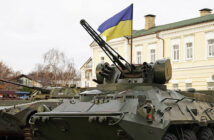 By Leighton G. Luke
By Leighton G. Luke
Manager, Indian Ocean Research Programme
Future Directions International.
According to the Washington Post, the United States is reportedly investigating the possibility of using the Cocos Islands, in the north-eastern Indian Ocean, as a base for surveillance aircraft. Also being considered is a greater use of the HMAS Stirling naval base, located in Perth, and of a possible new facility at Brisbane. In context with the recent agreement to rotate US Marines through Darwin, the growing interest confirms the importance of Australia as the US looks to reorient if forces towards the Asia-Western Pacific region.
The Cocos Islands comprise two atolls and 27 islands. Located some 2,950 kilometres north-west of Perth and 1,272 kilometres south-west of Jakarta, Indonesia, the islands serve as a refuelling stop for the Royal Australian Air Force’s Orion surveillance fleet. As FDI noted in November 2011, the US interest follows a suggestion made at that time by Defence Minister Stephen Smith that the Cocos Islands could, at some point in the future, host joint US-Australian naval and air assets. While Mr Smith points out that any proposal to use the Cocos Islands is likely to be well into the future, and that the Cocos airstrip in its current condition is unsuitable for use by Global Hawk drones, it nonetheless highlights the strategic importance of the archipelago.
For Washington, the ability to operate long-range surveillance drones capable of easily reaching the South China Sea from the Cocos Islands would be an inestimable asset. e current US base on the British Indian Ocean Territory atoll of Diego Garcia is much further a eld and is congested. While the American lease on the atoll comes up again in 2016, it would be remarkable if London were not to renew it. Unlike Diego Garcia, any Cocos facility would not be a naval base, although it would strengthen the US’ supply chains and logistics facilities. The Royal Australian Navy’s largest base, HMAS Stirling is located in the south-western quadrant of the Indian Ocean. It, too, would complement a reoriented US force posture with increased ship and submarine visits. It would o ffer US vessels in the Indian Ocean region a facility at which to refuel, re- fit and conduct maintenance.
In view of the above – and the Darwin Marines rotation and the joint use of a possible new naval facility at Brisbane – Australia’s strategic position at the con fluence of the Indian and Paci c Oceans is further validated. The Indo-Paci c nexus that Australia sits astride represents the westernmost aspect of the US realignment. While Australia is obviously keen on closer military ties with the US, as are other South-East Asian states such as Vietnam and the Philippines, both of which have moved closer to Washington, partly as a result of Beijing’s assertiveness in the South China Sea.
Singapore, a longstanding US partner, is in negotiations with Washington to base of up to four littoral combat ships in the city-state. While any response from Beijing may verge on the predictable, the reaction from Jakarta may be ambivalent. Indonesia, like Australia, is caught between its links with China, as a large and growing trading partner, and its security and trade relations with the United States. Mindful of the South China Sea disputes between China and a number of its fellow ASEAN members, Indonesia does not wish to see South-East Asia become a theatre of great power rivalry, or worse.
The Darwin Marines deployment was initially greeted with concern in Jakarta for that reason, although Foreign Marty Natalegawa and Defence Minister Purnomo Yusgiantoro subsequently stated at the 15 March 2012 “2+2 Dialogue” with their Australian counterparts that they had no problem with the Darwin initiative. Although a drone deployment on the Cocos Islands may not make Indonesia’s position between the US and China any easier, it would certainly contribute to enhancing the security of key regional waterways and chokepoints and consolidate US in uence and power projection in the region.





